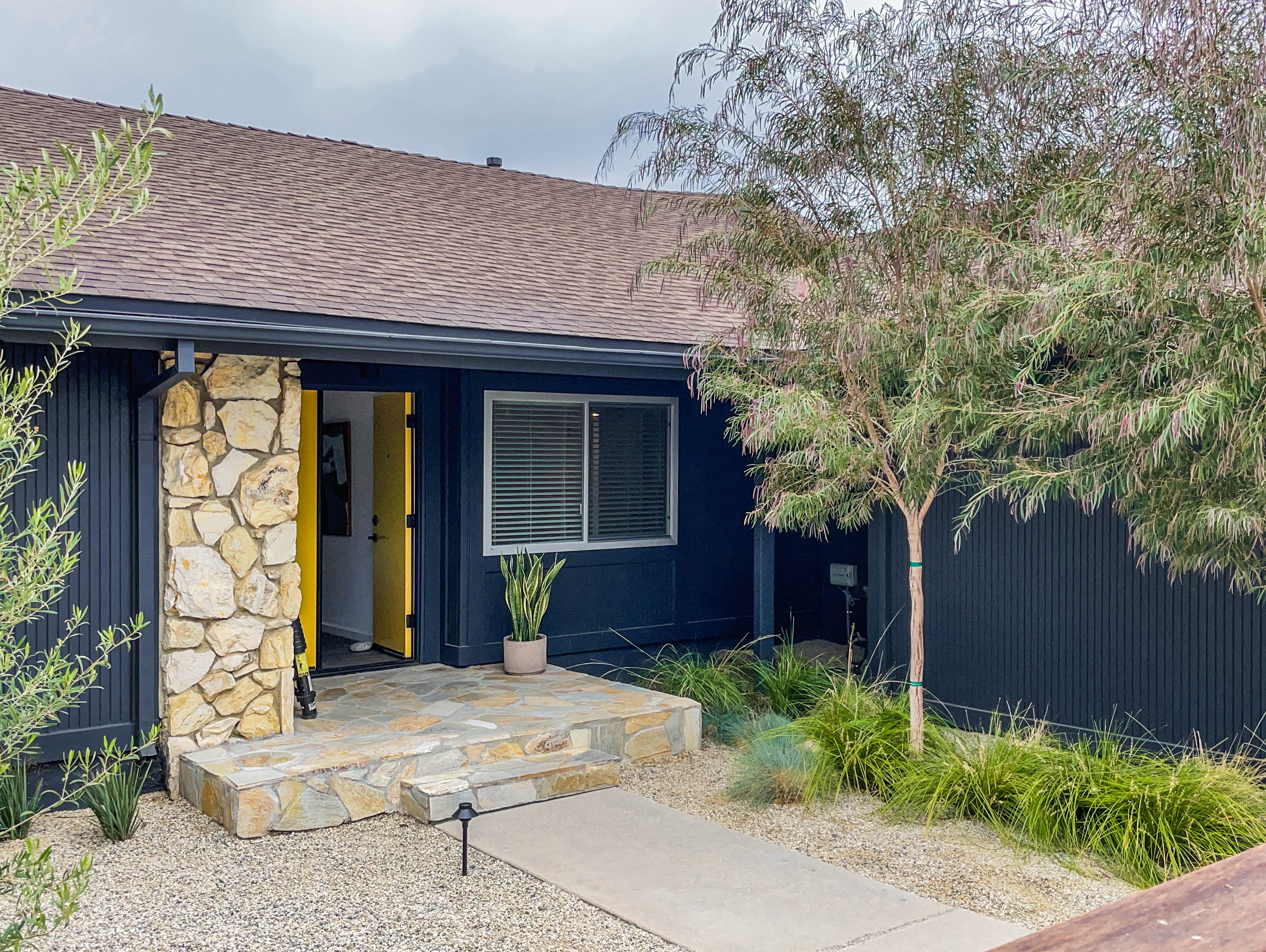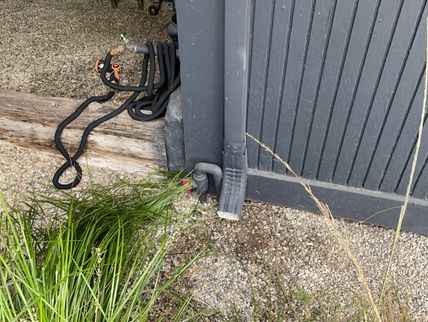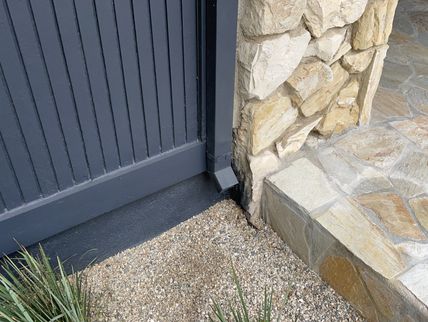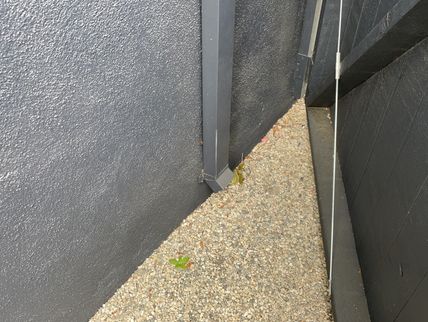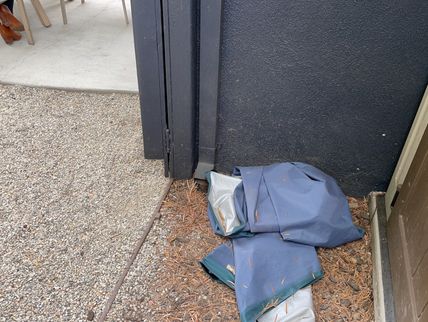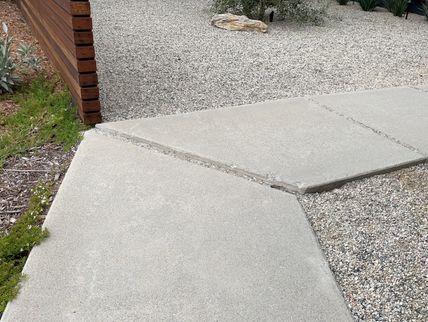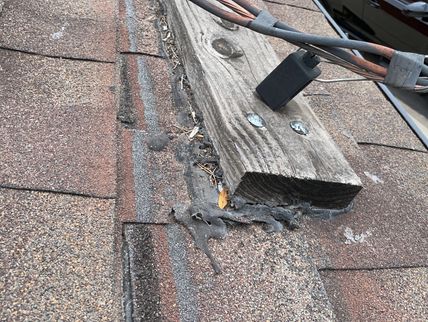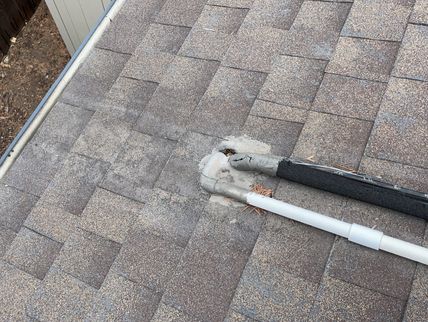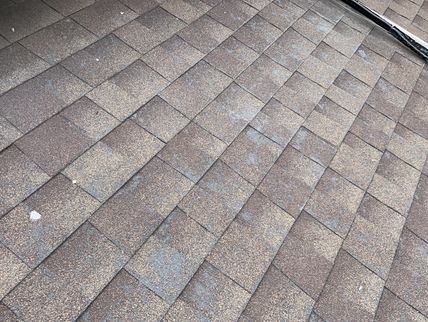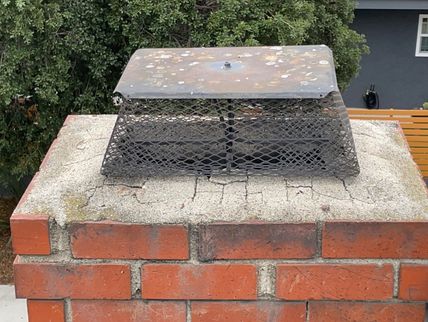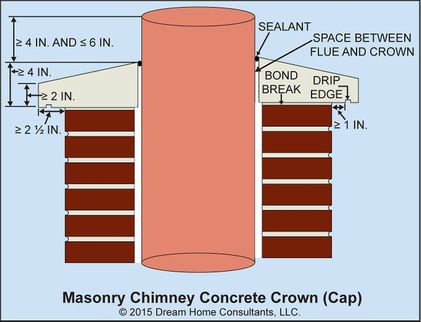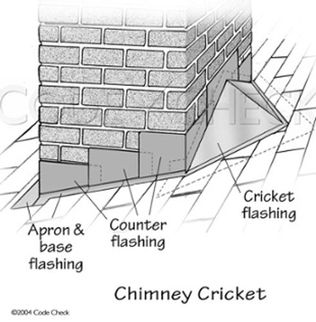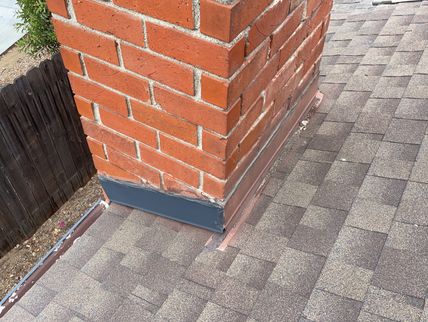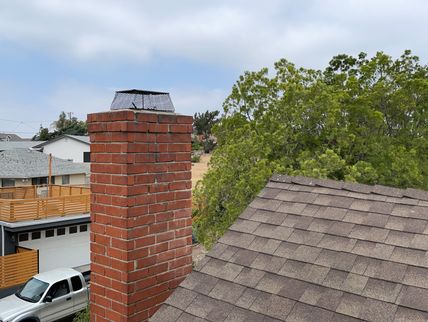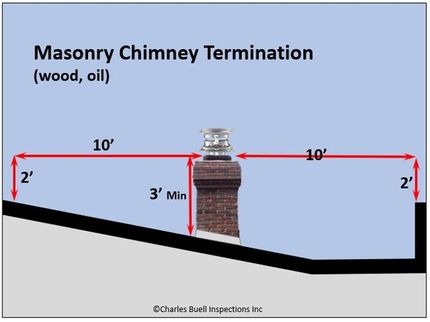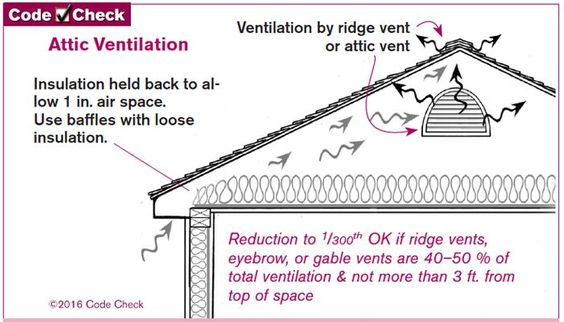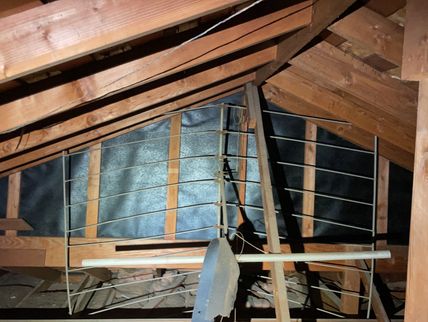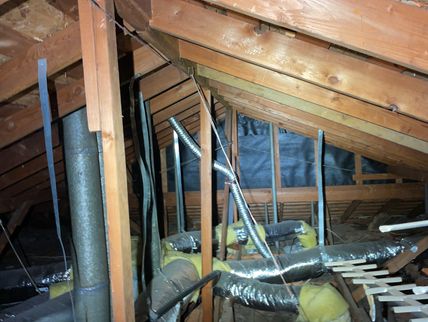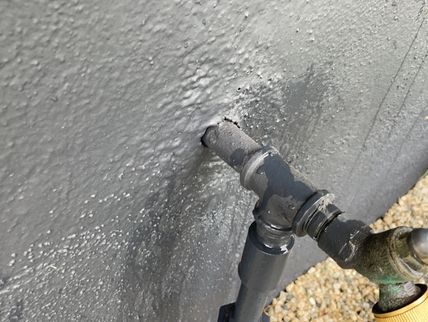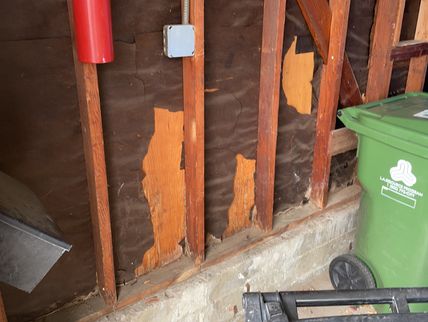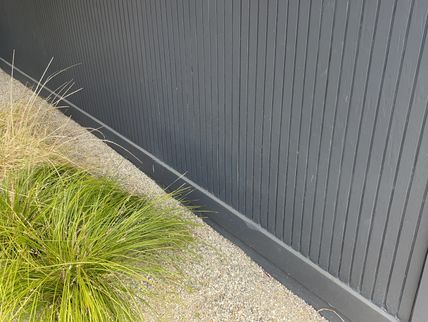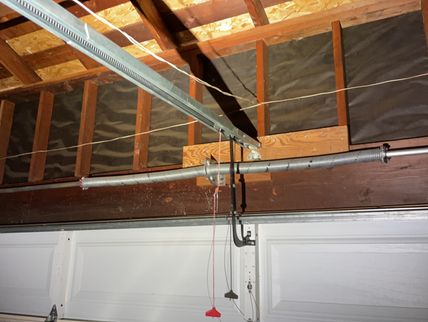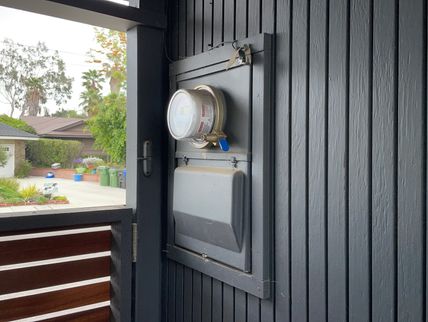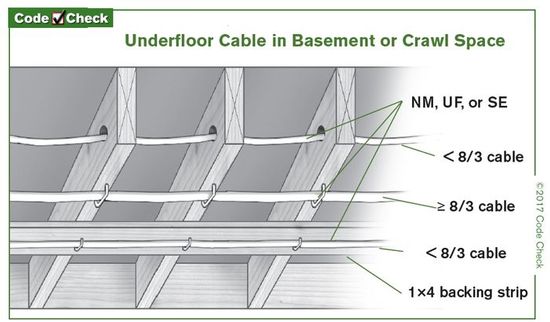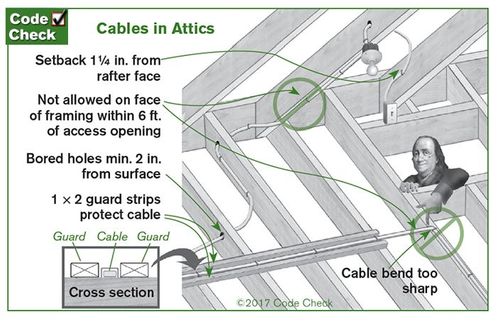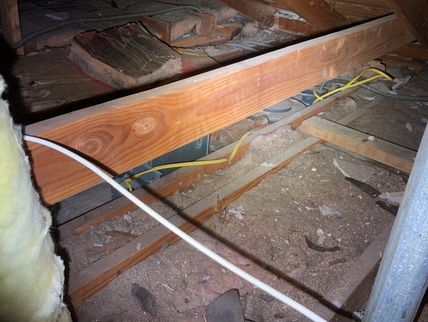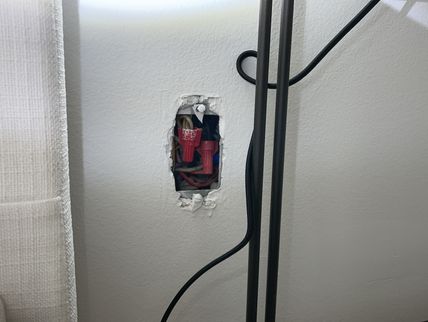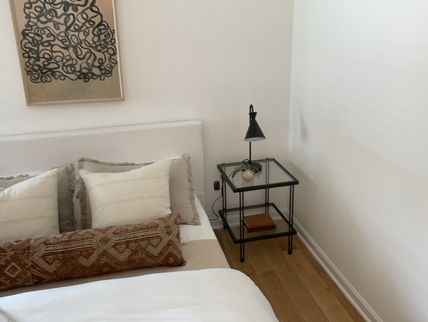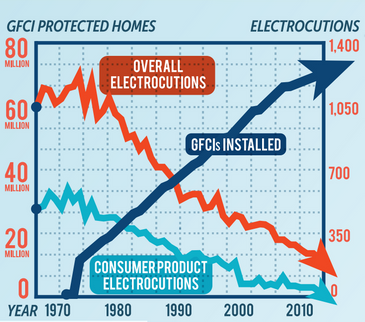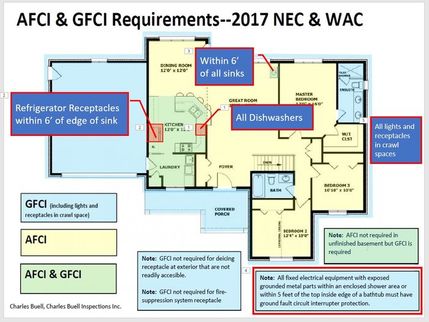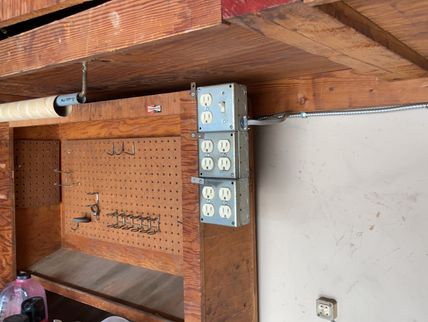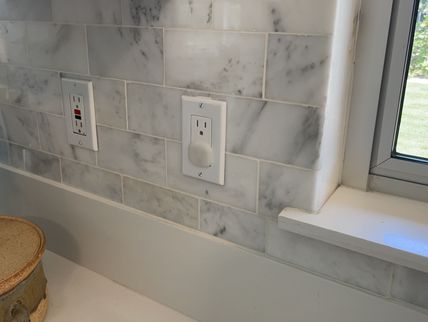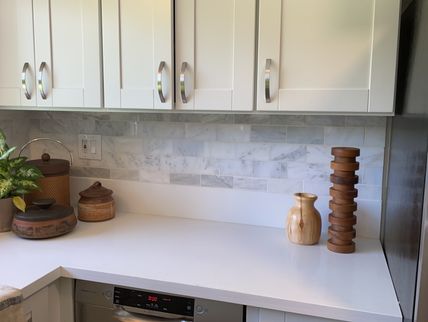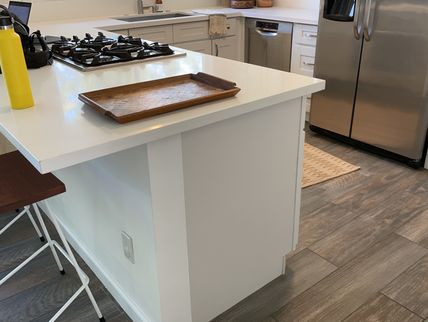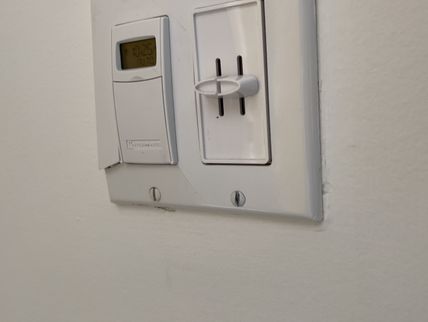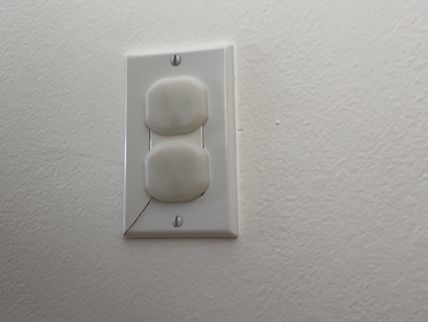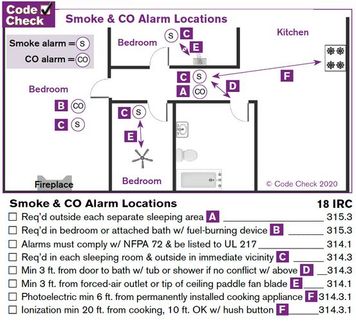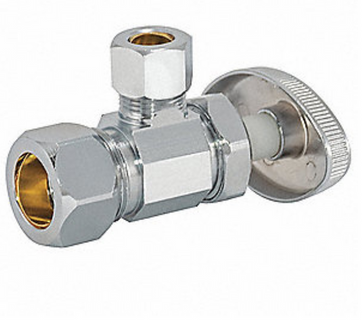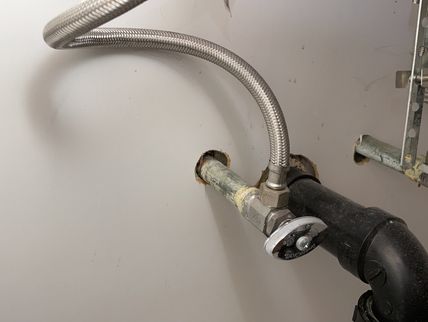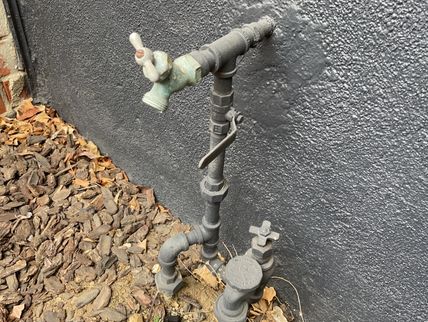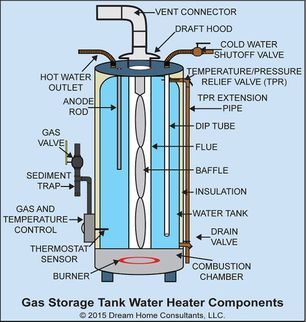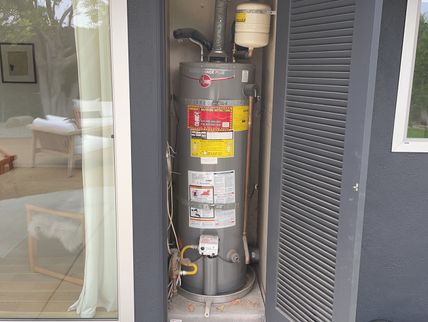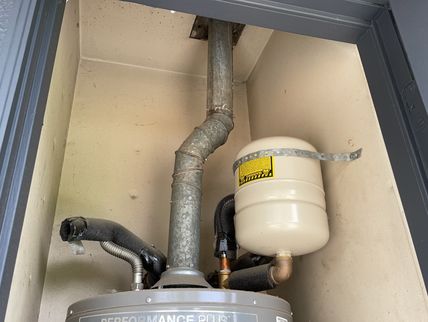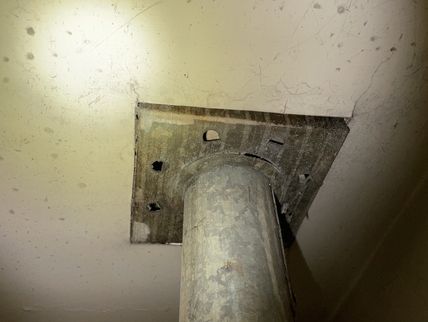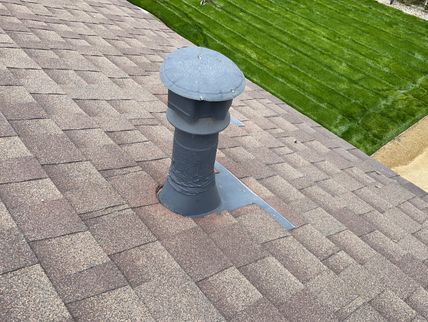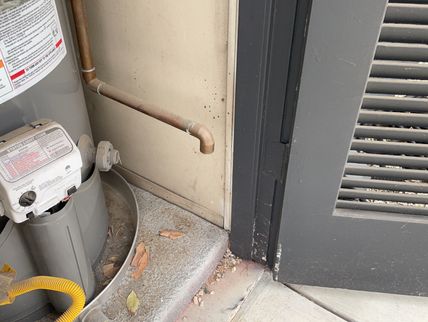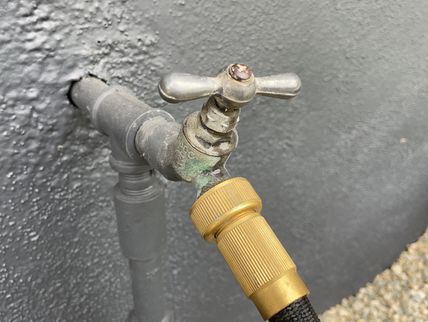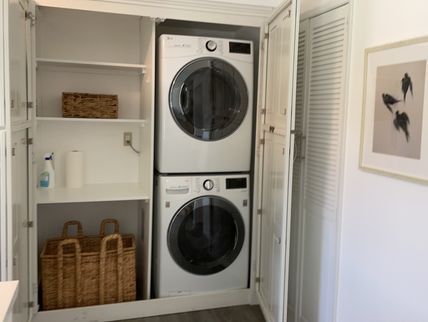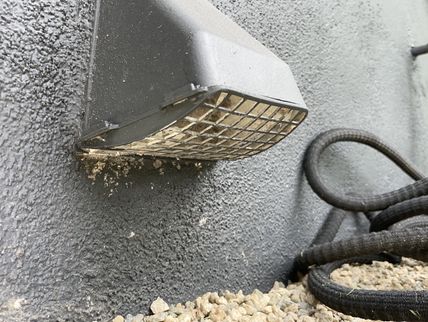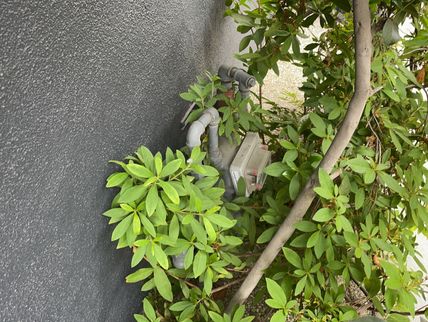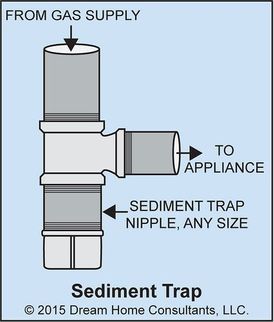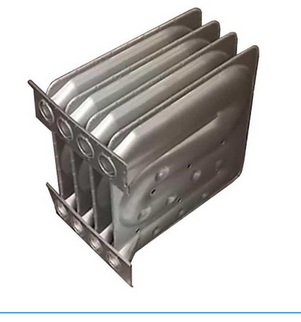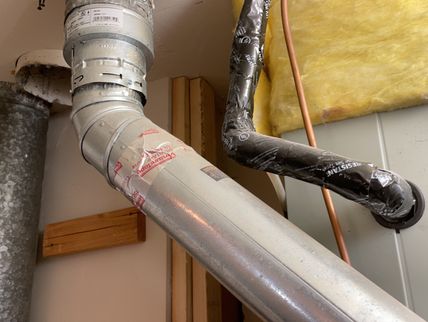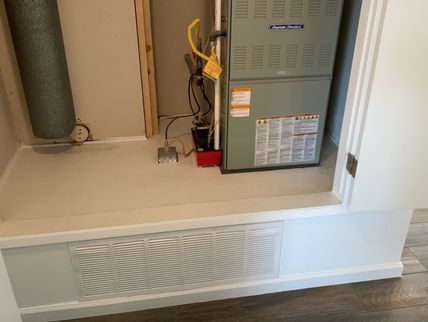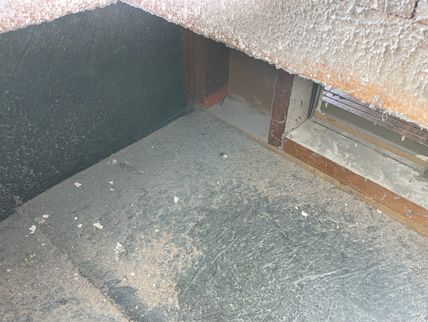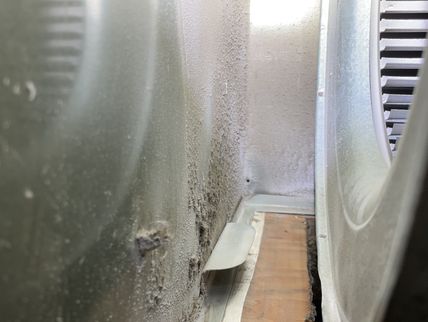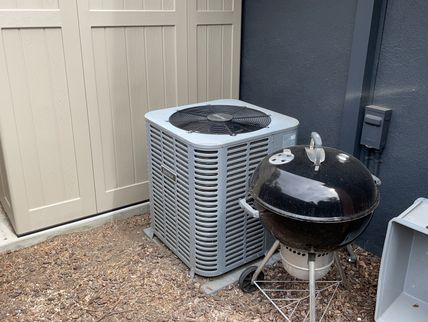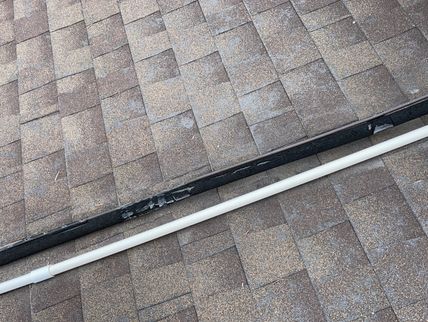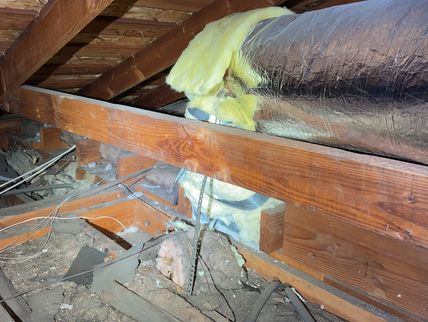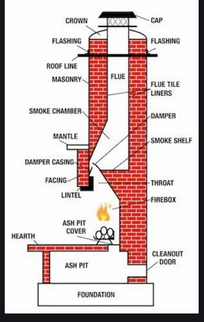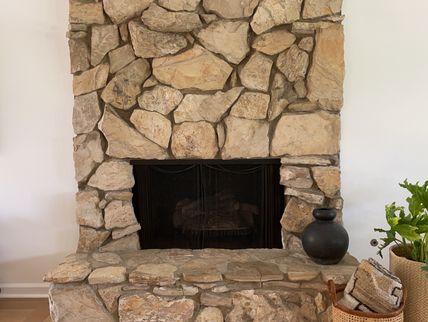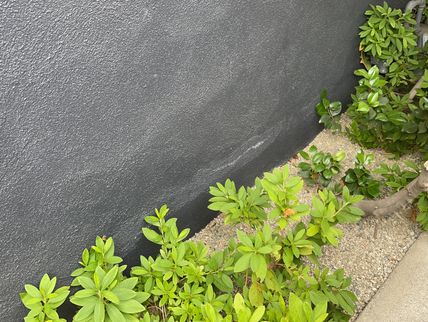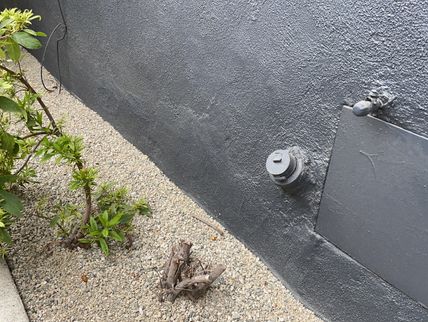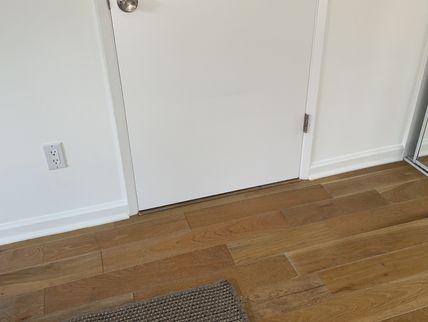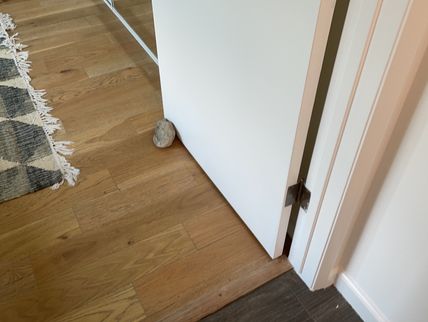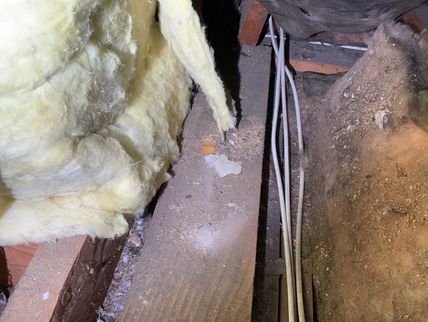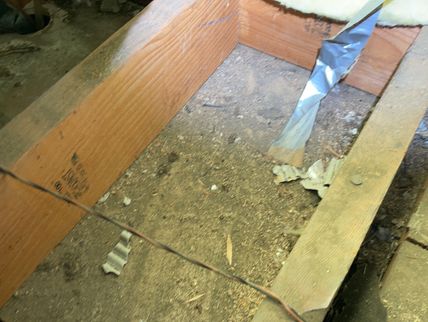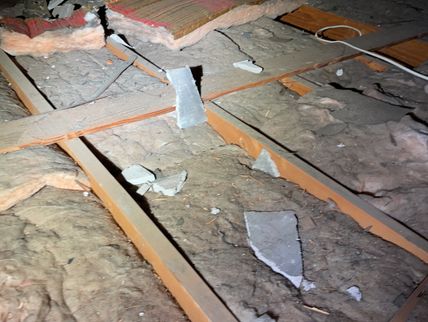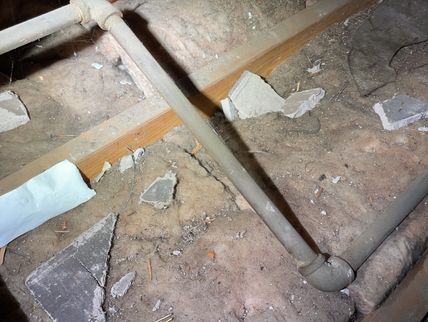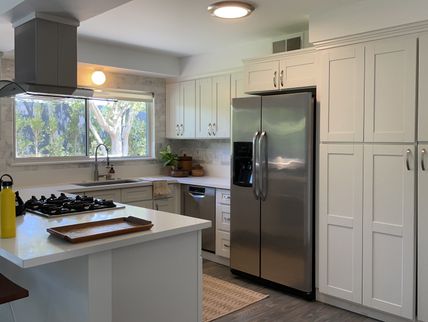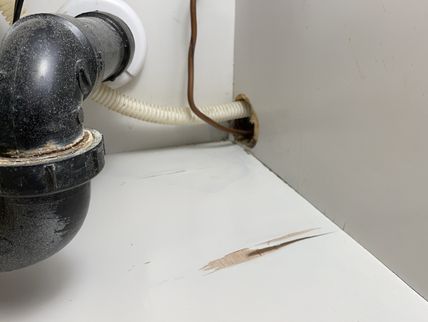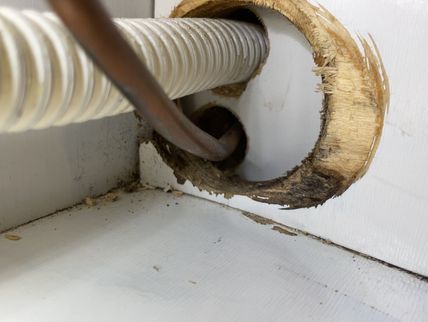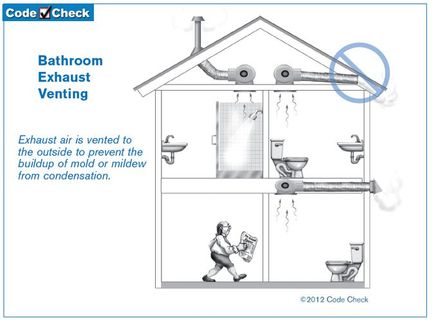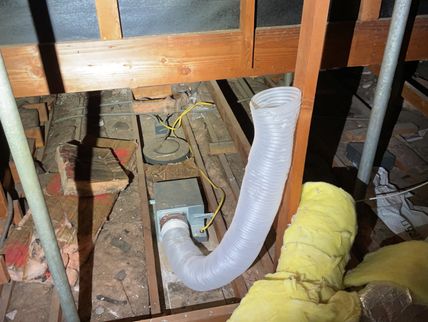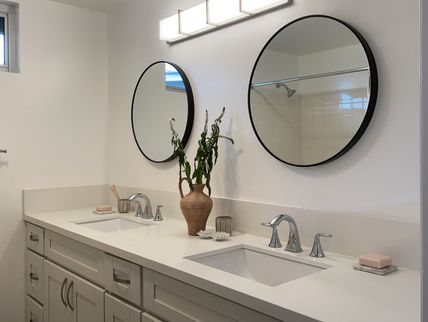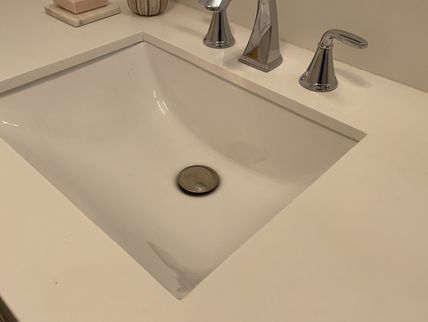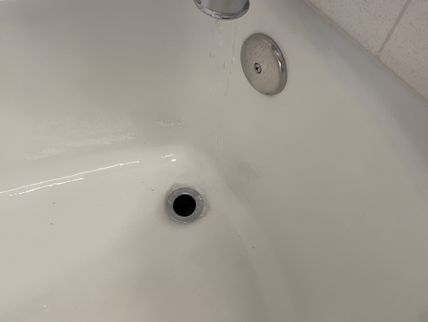The Scope and Purpose of a Home Inspection
Purchasing property involves risk
The purpose of a home inspection is to help reduce the risk associated with the purchase of a structure by providing a professional opinion about the overall condition of the structure. A home inspection is a limited visual inspection and it cannot eliminate this risk. Some homes present more risks than others. We cannot control this, but we try to help educate you about what we don’t know during the inspection process. This is more difficult to convey in a report and one of many reasons why we recommend that you attend the inspection.
A home inspection is not an insurance policy
This report does not substitute for or serve as a warranty or guarantee of any kind. Home warranties can be purchased separately from insuring firms that provide this service.
A home inspection is visual and not destructive
The descriptions and observations in this report are based on a visual inspection of the structure. We inspect the aspects of the structure that can be viewed without dismantling, damaging or disfiguring the structure and without moving furniture and interior furnishings. Areas that are concealed, hidden or inaccessible to view are not covered by this inspection. Some systems cannot be tested during this inspection as testing risks damaging the building. For example, overflow drains on bathtubs are not tested because if they were found to be leaking they could damage the finishes below. Our procedures involve non-invasive investigation and non-destructive testing which will limit the scope of the inspection.
This is not an inspection for code compliance
This inspection and report are not intended for city / local code compliance. During the construction process structures are inspected for code compliance by municipal inspectors. Framing is open at this time and conditions can be fully viewed. Framing is not open during inspections of finished homes, and this limits the inspection. All houses fall out of code compliance shortly after they are built, as the codes continually change. National codes are augmented at least every three years for all of the varying disciplines. Municipalities can choose to adopt and phase in sections of the codes on their own timetables. There are generally no requirements to bring older homes into compliance unless substantial renovation is being done.
This is just our opinion
Construction techniques and standards vary. There is no one way to build a house or install a system in a house. The observations in this report are the opinions of the home inspector. Other inspectors and contractors are likely to have some differing opinions. You are welcome to seek opinions from other professionals.
The scope of this inspection
This inspection will include the following systems: exterior, roof, structure, drainage surrounding the primary residence and detached garage, foundation, attic, interior, plumbing, electrical and heating. The evaluation will be based on limited observations that are primarily visual and non-invasive. This inspection and report are not intended to be technically exhaustive.
Your expectations
The overall goal of a home inspection is to help ensure that your expectations are appropriate with the house you are proposing to buy. To this end we assist with discovery by showing and documenting observations during the home inspection. This should not be mistaken for a technically exhaustive inspection designed to uncover every defect with a building. Such inspections are available but they are generally cost-prohibitive to most home buyers. Any recommendations for further evaluation made in this report should be addressed during the inspection contingency period.
Your participation is requested
Your presence is requested during this inspection. A written report will not substitute for all the possible information that can be conveyed verbally by a shared visual observation of the conditions of the property.
How to Read This Report
Getting the Information to You
This report is designed to deliver important and technical information in a way that is easy for anyone to access and understand. If you are in a hurry, you can take a quick look at our "Summary Page” and quickly get critical information for important decision making. However, we strongly recommend that you take the time to read the full Report, which includes digital photographs, captions, diagrams, descriptions, videos and hot links to additional information.
The best way to get the layers of information that are presented in this report is to read your report online, which will allow you to expand your learning about your house. You will notice some words or series of words highlighted in blue and underlined – clicking on these will provide you with a link to additional information.
This report can also be printed on paper or to a PDF document.
Chapters and Sections
This report is divided into chapters that parcel the home into logical inspection components. Each chapter is broken into sections that relate to a specific system or component of the home. You can navigate between chapters with the click of a button on the left side margin.
Most sections will contain some descriptive information done in black font. Observation narrative, done in colored boxes, will be included if a system or component is found to be significantly deficient in some way or if we wish to provide helpful additional information about the system or the scope of our inspection. If a system or component of the home was deemed to be in satisfactory or serviceable condition, there may be no narrative observation comments in that section and it may simply say “tested,” or “inspected.”
Observation Labels
All narrative observations are colored, numbered and labeled to help you find, refer to, and understand the severity of the observation. Observation colors and labels used in this report are:
- Major Concern:Repair items that may cost significant money to correct now or in the near future, or items that require immediate attention to prevent additional damage or eliminate safety hazards.
- Repair:Repair and maintenance items noted during inspection. Please note that some repair items can be expensive to correct such as re-finishing hardwood floors, but are considered simply repair items due to their cosmetic nature.
- Recommended Maintenance:These are repair items that should be considered "routine home ownership items," such as servicing the furnace, cleaning the gutters or changing the air filters in the furnace.
- Improve:Observations that are not necessarily defects, but which could be improved for safety, efficiency, or reliability reasons.
- Monitor:Items that should be watched to see if correction may be needed in the future.
- Due Diligence:Observation such as a buried oil tank that may require further investigation to determine the severity and / or urgency of repair.
- Future Project:A repair that may be deferred for some time but should be on the radar for repair or replacement in the near future.
- Efficiency:Denotes observations that are needed to make the home more energy efficient as well as to bring the home up to modern insulation standards. This category typically includes windows and insulation. Other items, such as lighting and appliances, are not inspected for their energy status.
- Completed:Items that were initially an issue but have since been completed.
- Note:Refers to aside information and /or any comments elaborating on descriptions of systems in the home or limitations to the home inspection.
- Description:Detailed description of various aspects of the property noted during the inspection.
Summary Page
The Summary Page is designed as a bulleted overview of all the observations noted during inspection. This helpful overview is not a substitution for reading the entire inspection report. The entire report must be read to get a complete understanding of this inspection report as the Summary Page does not include photographs or photo captions.
Summary
Major Concerns
- RGC-5 Roof, Gutters, and Chimney:
Movement was noted in the chimney when pushed on from the rooftop. This could be indication of a crack in the masonry and warrants further investigation by a chimney specialist at this time. Cracking in the masonry poses a hazard related to both fire safety and physical integrity.
- E-1 Electrical:
This is a Zinsco brand electrical panel. These panels have a reputation for failing and malfunctioning breakers as well as a unique aluminum bus bar design which is subject to corrosion and loose connections which can lead to arcing and fires. These panels are considered a latent fire hazard. Panel replacement is recommended for improved safety. Have this panel further evaluated by a qualified electrician during the inspection contingency period.
- HC4-6 Heating and Cooling:
Old white insulation tape was noted on the ductwork in the attic. This is a product that may contain asbestos. Asbestos testing is beyond the scope of this inspection. Consult with an asbestos remediation specialist for more information. As some of this product was visibly damaged it should be properly repaired or removed at this time due to potential health concerns.
- I-4 Interior:
There are remnants of old HVAC ductwork in the attic which likely contain asbestos. There are also pieces of an older type of composite roofing tile present in the attic which may contain asbestos as well. These materials have been damaged which can allow asbestos fibers, if present, to become airborne. Recommend further evaluation and remediation as needed by a qualified environmental agency. Due to health concerns associated with asbestiform mineral fibers, this should be considered urgent for safety reasons.
Repairs
- GD-1 Grounds and Drainage:
Downspouts are discharging adjacent to the foundation. This can cause foundation settlement or other structural problems. Make sure all downspouts discharge into a proper system that diverts water away from the foundation.
- GD-2 Grounds and Drainage:
Portions of the walkway paving around the home are settling creating trip hazards - see front walkway. Hire a qualified general contractor to further investigate and repair to eliminate all trip hazards and ensure a reliable walking surface.
- RGC-2 Roof, Gutters, and Chimney:
There are damaged shingles present where it appears the mounting block for the electrical service entrance has shifted. Have this repaired by a qualified roofing contractor to prevent damage to the wooden sheathing and framing beneath. This also requires repair by an electrician which is further discussed elsewhere in this report
- RGC-3 Roof, Gutters, and Chimney:
The refrigerant and condensation drainage lines for the air-conditioning system have been improperly installed through the roof without the use of flashing. This will be vulnerable to water entry and should be corrected by a qualified roofing contractor. A better solution would be to route these elsewhere than through the roof.
- RGC-6 Roof, Gutters, and Chimney:
Recommend having the repair or replacement of the masonry chimney top in accordance with the attached illustration. The existing mortar is cracked and failing which can allow water entry and damage in the masonry structure.
- ED-1 Exterior and Decks:
Any objects which pass through the siding should be caulked or otherwise sealed to prevent water entry into the wall interior
- G-1 Garage:
The laser eye safety mechanism for the overhead garage door has been set too high - this sensor should be no more than 6 inches off of the floor to perform as intended and prevent entrapment. Have this further evaluated and repaired by a garage door specialist.
- G-2 Garage:
The spring for the vehicle door is in need of improved tensioning. The door comes down too freely along the lower portion of its travel which could be a safety concern. This is a relatively simple repair by a qualified installer.
- E-3 Electrical:
The non-metallic sheathed cable is poorly supported and requires staples or hangers for additional support and strain relief - see attic. This type of wiring should be supported every 4 feet and within 2 feet of junction boxes. Have this improved by an electrician.
- E-5 Electrical:
The missing cover plates to electric receptacles, switches and junction boxes should be installed at this time to prevent entry.
- E-6 Electrical:
The use of GFCI (Ground Fault Circuit Interruption) protection is inconsistent with modern minimum standards for safety - see kitchen countertops and garage. GFCI protection is recommended for the electrical receptacles in the following locations: the two dedicated kitchen appliance circuits, all receptacles within 6 feet of a sink, bathrooms, exterior, garage, unfinished basements, laundry and all wet and damp locations. GFCI's protect against electrocution by limiting the duration of an electrical shock. These are an important modern safety feature that have proven to save lives. Hire a licensed electrician to further evaluate and update GFCI protection for improved safety.
- E-7 Electrical:
This house has a recently renovated kitchen but it does not appear that the kitchen wiring system was upgraded during renovation. Older houses often had a minimal number of circuits for kitchens and older kitchens had fewer demands for electricity. Most modern kitchens have at least 7 circuits dedicated to kitchen wiring and may include requirements for AFCI and GFCI protection. Examples of modern kitchen wiring requirements include:
- Refrigerators should be on a 20-amp dedicated circuit and include GFCI protection when the refrigerator is within 6-feet of a sink or in a garage or unfinished basement.
- Dishwashers and sink disposers on dedicated 15-amp circuits
- Microwaves require a dedicated circuit and many models will require 20-amps.
- Small appliance, countertop receptacles: there should be 2, 20-amp circuits for countertops.
- Most electric ranges require 240 volt and 50-amp circuits, though this will vary by model and type
- Gas ranges and lighting will also require 15-amp circuits.
Recommend additional inspection and repair / updating of this kitchen wiring to ensure the kitchen performs reliably with all these more modern appliances.
- E-8 Electrical:
The cracked electrical cover plates should be replaced
- P-3 Plumbing:
Visible rust and corrosion on the vent pipe indicates that it was reused from an older appliance. Ideally this would have been updated with the installation of the newer water heater. Current standards require that the entirety of the vent pipe be constructed of double walled metal (type B) vent pipe rather than single walled material and old clay transite pipe (which may contain asbestos). Have this replaced by a qualified plumbing contractor.
- P-4 Plumbing:
The discharge tube for the water heater relief valve is installed too high off the ground and into a sink. Discharge tubes should always terminate by pointing toward the ground to eliminate a scald hazard and should be no more than 6" off the ground. Ideally, the discharge tube terminates to an exterior or unfinished location or above a drain, though this is not always possible. The drain should also slope to drain to prevent water pooling inside the discharge tube and should be visible so it can be monitored. The end of the tube should not be threaded to prevent accidental capping of this important discharge. have this further investigated and repaired as recommended by a qualified plumber.
- P-5 Plumbing:
The leaky hose bibs require repair or replacement - the faucet at the left side of the house was leaking when shut off and one at the back of the house leaks from the handle when on and under pressure.
- LF-2 Laundry Facilities:
The dryer exhaust duct termination at the exterior of the building is covered with a screen. This is a safety hazard that could block lint and cause a fire. Replace this vent cover with a cover that has a backdraft damper.
- HC4-1 Heating and Cooling:
The furnace vent does not appear to have adequate clearances from combustible materials - single wall vent like this requires a 6 inch clearance and should not pass through finishes or be in attics - only insulated B-vent should pass through wall and ceiling finishes or attics. This is a safety hazard. Hire a qualified heating contractor to further evaluate and repair.
- HC4-2 Heating and Cooling:
Gaps are present around the door with access to the heating element and there is the possibility that suction created by the air return may draw exhaust gases containing carbon monoxide into the breathable air within the home. This door should be sealed with weatherstripping to ensure airtight construction.
- HC4-3 Heating and Cooling:
The condensate drain which runs through the attic is poorly supported and not properly sloped to drain. This can result in clogging and should be corrected by a qualified HVAC technician
- HC4-5 Heating and Cooling:
The insulation for the refrigerant lines for the AC is damaged and requires repair. This should be done to ensure reliable and efficient performance from this unit.
- HC4-7 Heating and Cooling:
Duct tape has been used to seal the ductwork. Duct tape should never be used to seal ducts as it desiccates and falls off causing leaks. Use duct mastic to seal all homes in ductwork to improve indoor air quality and efficiency of the heating system.
- K-2 Kitchen:
Water damage is present within the cabinetry beneath the kitchen sink and stains were visible which could be related to organic growth. No current leak was discovered however there are health risks associated with certain types of organic growth and it is recommended that this be further evaluated by a qualified environmental agency at this time.
- PB-2 Primary Bathroom:
This exhaust fan is improperly venting into the attic. Have this extended to the exterior and terminate with use of a back draft damper.
- HB-3 Hall Bathroom:
The stopper in the guest bathtub is missing and requires repair or replacement - or a rubber stopper can be used.
Recommended Maintenance Items
- ED-2 Exterior and Decks:
The vapor barrier between the wood cladding and wall framing has been damaged in the garage. This can result in water penetration into enclosed spaces and may damage wooden framing components over time. As proper replacement of vapor barrier is impractical and cost prohibitive, it is recommended that the exterior of this structure be kept well maintained to help ensure that the siding does not leak or become saturated.
- LF-3 Laundry Facilities:
The dryer exhaust ductwork is dirty and needs to be cleaned for improved safety. This is important regular maintenance to eliminate a potential fire hazard.
- HC4-4 Heating and Cooling:
Annual servicing of the gas forced air furnaces is recommended for safe and reliable heat. The furnace was tested during inspection and was operational. The design life of these forced air furnaces is 15-20 years. Recommend having it serviced and keeping it on an annual service schedule.
Improves
- RGC-7 Roof, Gutters, and Chimney:
The counter-flashings for the masonry chimney are executed in a non-standard fashion that could be unreliable. Chimney to roof junctures are inherently complex and vulnerable to leaks and require a two part flashing system with roofers installing step flashings and masons installing counter-flashings for reliable performance.
- RGC-10 Roof, Gutters, and Chimney:
The attic and roof cavity ventilation appears to be non-standard. Standards today recommend open ventilation levels in a ratio of 1:150 of the attic area. Proper roof cavity ventilation is important to keep the attic space cool and dry. Recommend having a qualified general or roofing contractor evaluate the level of ventilation on this roof and improve with ridge, soffit, core or other vents as needed. Proper attic ventilation is important for the roofing materials to perform as intended and to reduce chances for condensation problems and heat build-up in the attic.
- E-2 Electrical:
This building has a 100 amp electric service which is considered undersized for the demands of today's homes. The current standard is 200 amp service. This smaller service size could inhibit the ability to add additional circuits to the building such as electric vehicle charging, photovoltaic solar, or additional receptacles.
- P-6 Plumbing:
Backflow prevention devices are currently required at all hose bibs. Recommend installing as these devices are intended to minimize the chance of contamination of potable water.
- FD-1 Fuel and Distribution:
No sediment trap was found for the gas pipe at the gas water heater or furnace. Sediment traps are designed to prevent fouling of gas equipment by allowing sediment to fall out of the gas supply. Have this further evaluated and repaired as recommended by a qualified plumber. Sediment traps are currently required at all automatically controlled gas appliances.
- I-1 Interior:
A gap is present in the flooring where the primary bedroom closet cabinetry was modified. Repair as desired
- I-3 Interior:
The doors should be trimmed to provide a minimum 1 inch air gap between the door and the floor. This is of greater importance on doors to bedrooms in homes with central forced air heat to allow air to flow evenly through the home.
- HB-2 Hall Bathroom:
The left side sink basin in the hall bathroom does not have an operable shopper. Improve as desired
- HB-4 Hall Bathroom:
The tile grout is showing signs of absorbing moisture when running the shower. Tile and grout should be sealed and regularly maintained to minimize water penetration behind the tile. Plan on annual cleaning and sealing tile grout inside the shower surrounds to prolong the useful life of the tile. Prior to sealing, replace any failing grout and caulking at inside corners. At inside corners, sanded caulking works well and can be selected to match existing grout.
Due Diligences
- RGC-9 Roof, Gutters, and Chimney:
Damage was seen on some of the rafters which should be further evaluated by a Branch II Pest Control Inspector during the inspection contingency period. Please note that identification of wood destroying organisms is outside of the scope of a general home inspection.
- P-2 Plumbing:
Much of the waste plumbing used in this building is old. While no leaks were noted at the time of inspection, updating and on-going repairs should be expected. Old metal pipes are subject to internal corrosion which can cause problems at any time. During any renovations to the home be sure to have this old piping evaluated and updated as recommended by a licensed plumber. As a general rule, cast iron and galvanized waste pipe have a lifespan of 50-80 years. It is recommended that this older material be further evaluated by a qualified plumbing contractor or sewer inspector at this time. Since this structure is constructed on a slab, most all of the piping is not visible and only by viewing the inside of the pipe can an approximation of its condition be understood
- AP-1 Additional Plumbing:
An exterior irrigation system was noted for this home. Sprinkler systems are beyond the scope of this inspection. Irrigation systems often require annual attention / repair / servicing. Inquire with the seller for any information about this system. When testing the system, be sure sprinkler heads are adjusted so the system is not watering the side of the house. Hire a specialist to further evaluate this system as desired.
- FS-1 Foundation and Structure:
Patching was seen on the right side of the house in the approximate location of where the wall framing rests on the concrete slab. This may indicate some prior settlement of the slab however no additional evidence of movement was able to be discovered during inspection. Recommend consulting with the seller regarding any prior issues with the structure. This dwelling was recently remodeled and it is possible that the slab was visible before the existing floor finishes were installed.
Future Projects
- P-1 Plumbing:
Budget to replace the remaining galvanized steel supply pipe at some point in the near term and definitely during any remodel work to kitchens, laundry or bathrooms. Most of the pipe was not visible to inspection and it could not be determined the percentage of steel pipe in use. The average life of this pipe can vary widely, but tends to be between 40-60 years. As this pipe gets old and corrodes, the insides of the pipe constrict with rust, causing reduced water flow. This can be tolerated for some time, but eventually the functional flow becomes so diminished that pipe replacement is necessary. At the time of inspection, functional flow was adequate and no active leaks were found. This condition could change or worsen at any time. It is recommended that a qualified plumbing contractor conduct further evaluation of the water piping at this time.
Notes
- RGC-4 Roof, Gutters, and Chimney:
Granular loss was noted to some of the shingles which is an indicator of age. The exposed substrate will wear more rapidly now that it is exposed to sunlight and the weather. The roof still appears to have some degree of remaining serviceable life however will likely require replacement in the not too distant future.
- RGC-8 Roof, Gutters, and Chimney:
Inadequate clearances were noted for the chimney termination. Chimneys should be three feet above the roof where the chimney penetrates through the roof and two feet above anything within ten feet of the chimney. This is typical of older chimneys however could affect drafting of smoke and exhaust gases to the exterior.
- E-4 Electrical:
This building may have wiring that predates the late 1980's. Branch circuit wiring installed in buildings built prior to the late 1980s is typically rated for a maximum temperature of only 60 degrees Celsius. This includes non-metallic sheathed (Romex) wiring, and both BX and AC metal-clad flexible wiring. Knob and tube wiring, typically installed in homes built prior to 1950, may be rated for even lower maximum temperatures. Newer electric fixtures including lighting and fans typically require wiring rated for 90 degrees Celsius. Connecting newer fixtures to older, 60-degree-rated wiring is a potential fire hazard. Repairs for such conditions may involve replacing the last few feet of wiring to newer fixtures with new 90-degree-rated wire, and installing a junction box to join the old and new wiring. It is beyond the scope of this inspection to determine if any such incompatible components are installed. Based on the age of this building, be aware that such components may be present.
- E-9 Electrical:
The link below includes important information about smoke alarms that could save lives in the event of a fire. There are two basic types of smoke alarms: ionization, which are better at detecting flaming fires and photoelectric, which are better at detecting smoldering fires. Standards in the building industry are moving toward recommending BOTH types of detectors in the home. It is nearly impossible to accurately test smoke alarms during a home inspection and testing is outside the scope of this evaluation. Recommend learning more about these important life saving devices and consider installing both types of smoke detectors in your home.
- AP-2 Additional Plumbing:
A water filtration system was noted in the garage. Evaluation of this system and water quality is beyond the scope of this inspection. Recommend inquiring with the seller for any maintenance, warranty or installer information that pertains to this system. If the system has not been serviced recently, have the filter system serviced and filters cleaned or replaced as a part of the recommended maintenance schedule.
- I-2 Interior:
This dwelling has recently been painted which could be concealing prior defects such as, but not limited to, cracking or water staining.
- I-5 Interior:
This building was constructed prior to the early-1980's and may contain lead and/or asbestos. Lead is commonly found in paint and in some plumbing components in buildings built around or before 1978. The EPA does not recognize newer coats of paint as encapsulating older coats of lead-based paint. Asbestos is commonly found in various building materials such as insulation, siding, and/or floor and ceiling tiles. Laws were passed in 1978 to prohibit usage of lead and asbestos, but stocks of materials containing these substances remained in use for a number of years thereafter. Both lead and asbestos are known health hazards. Evaluating for the presence of lead and/or asbestos is beyond the scope of this inspection. Any mention of these materials in this report is made as a courtesy only, and meant to refer the client to a specialist. Consult with specialists as necessary, such as industrial hygienists, professional labs and/or abatement specialists for this type of evaluation. In general, the greatest risk of exposure is during renovation projects where these materials could become aerosolized.
- PB-3 Primary Bathroom:
During inspection, all plumbing fixtures in bathrooms were operated. Bathtub overflow drains are not tested as this risks damaging finishes around the tub. Monitor tubs while filling and avoid pushing water into the overflow. Even well-installed overflow drains can leak as the gaskets that seal the overflow will dry out over time and may no longer provide a watertight seal. Monitor plumbing after moving into a new home as testing during inspection presents less stress on plumbing than daily use. Please note that vacant homes present additional risk as it can be difficult to distinguish how the plumbing system will respond to daily use. Any defects uncovered during inspection are listed in this report.
The Full Report
General Comments
Building Characteristics, Conditions and Limitations
Type of Building : Residential Single Family (1 story)
Approximate Year of Original Construction: 1964
Unless the wiring in the building has been fully updated, this building likely has wiring that predates the late 1980's. Branch circuit wiring installed in buildings built prior to the late 1980s is typically rated for a maximum temperature of only 60 degrees Celsius. This includes non-metallic sheathed (Romex) wiring, and both BX and AC metal-clad flexible wiring. Knob and tube wiring, typically installed in homes built prior to 1950, may be rated for even lower maximum temperatures. Newer electric fixtures including lighting and fans typically require wiring rated for 90 degrees Celsius. Connecting newer fixtures to older, 60-degree-rated wiring is a potential fire hazard. Repairs for such conditions may involve replacing the last few feet of wiring to newer fixtures with new 90-degree-rated wire, and installing a junction box to join the old and new wiring. It is beyond the scope of this inspection to determine if any such incompatible components are installed. Based on the age of this building, be aware that such components may be present.
In 1978, federal laws were passed to prohibit use of lead and asbestos in building materials. Manufacturers of building materials were allowed to sell existing stocks of materials that were manufactured with lead and asbestos, so even buildings constructed as late as the mid-1980's could possibly contain lead or asbestos. Identification and testing for lead and asbestos and other environmental testing is beyond the scope of this home inspection. If you wish to seek additional information, recommend contacting an environmental lab or industrial hygienist.
Solid conductor aluminum wiring was used in residential construction for 15 and 20-amp circuits in the 1960's through the 1970's. This wiring has proven to be problematic and a fire hazard, primarily due to problems with loose connections and metal fatigue. No signs of the presence of this wiring were found. There is always a chance that solid conductor aluminum wiring exists and is concealed from view. If this wiring is ever uncovered during subsequent renovation work, recommend removal and replacement.
Attending the Inspection: Buyer and Buyer's Agent, Listing Agent
Occupancy: Unoccupied, but staged with furniture
Weather during the inspection: Clear
Approximate temperature during the inspection: Over 70[F]
Ground/Soil surface conditions: Dry
For the Purposes of This Report, the Front Door Faces: East
This house was vacant / unoccupied at the time of inspection. Vacant and unoccupied houses present unique challenges for home inspection, particularly relating to the piping and wiring systems which have not be subject to regular use prior to the inspection. While these systems can be tested during inspection, this one-time test is different than regular use and it is difficult to know how these systems will respond to regular use after the inspection. For example, septic systems may initially function and then fail under regular daily use. Plumbing traps may operate with no signs of leaks and then let go when being actively used for a few days. Shower pans may only leak when someone is standing in the shower and taking a shower. Seals for plumbing fixtures can dry up and leak when not is use. Sewer lines with roots may allow water flow, but then fail when waste and tissue are flushed; it can take a few days for that to backup. Please understand we are trying our best to look for clues of past or existing problems to paint a realistic best-guess as to the reliability of these systems during inspection.
Grounds and Drainage
Drainage and Lot Location
Clearance to Grade: Standard
Downspout Discharge: Above grade, Next to Foundation
Driveways/Walkways/Paving
Driveway: Concrete
Walkways: Concrete
Patios: Concrete
Grounds, Trees and Vegetation
Trees/Vegetation too near building: No
Retaining Wall
Retaining Wall Material: Block
Fences, Gates, and Walls
Present
Roof, Gutters, and Chimney
Roof Materials
Method of Roof Inspection: Walked on roof
Roof Style: Gable
Flashings: Present and Visually Standard
Roof flashings are used to keep a roofing system water proof where the roofing material starts, stops, changes direction or is penetrated. During inspection, we look for standard flashing techniques that could be considered normal or standard in our region. Damaged, incomplete or non-standard flashings can be a sign of an older or less reliable roofing system and may require repair. Any non-standard flashings noted during inspection will be reported on below if found.
Roof Covering Materials: Architectural grade composition shingle
Approximate Remaining Life Expectancy: 4-6 Years
Overlay Roof: No
There are damaged shingles present where it appears the mounting block for the electrical service entrance has shifted. Have this repaired by a qualified roofing contractor to prevent damage to the wooden sheathing and framing beneath. This also requires repair by an electrician which is further discussed elsewhere in this report
The refrigerant and condensation drainage lines for the air-conditioning system have been improperly installed through the roof without the use of flashing. This will be vulnerable to water entry and should be corrected by a qualified roofing contractor. A better solution would be to route these elsewhere than through the roof.
Granular loss was noted to some of the shingles which is an indicator of age. The exposed substrate will wear more rapidly now that it is exposed to sunlight and the weather. The roof still appears to have some degree of remaining serviceable life however will likely require replacement in the not too distant future.
Chimney
Present
Chimney Material: Masonry
Movement was noted in the chimney when pushed on from the rooftop. This could be indication of a crack in the masonry and warrants further investigation by a chimney specialist at this time. Cracking in the masonry poses a hazard related to both fire safety and physical integrity.
Recommend having the repair or replacement of the masonry chimney top in accordance with the attached illustration. The existing mortar is cracked and failing which can allow water entry and damage in the masonry structure.
The counter-flashings for the masonry chimney are executed in a non-standard fashion that could be unreliable. Chimney to roof junctures are inherently complex and vulnerable to leaks and require a two part flashing system with roofers installing step flashings and masons installing counter-flashings for reliable performance.
Inadequate clearances were noted for the chimney termination. Chimneys should be three feet above the roof where the chimney penetrates through the roof and two feet above anything within ten feet of the chimney. This is typical of older chimneys however could affect drafting of smoke and exhaust gases to the exterior.
Gutters and Downspouts
Gutter and Downspout Materials: Galvanized
Attic Access
Walked
Roof Framing and Sheathing
Rafters: 2x6
Sheathing: Plywood
Attic Insulation
Insulation Type: Fiberglass
Attic and Roof Cavity Ventilation
The attic and roof cavity ventilation appears to be non-standard. Standards today recommend open ventilation levels in a ratio of 1:150 of the attic area. Proper roof cavity ventilation is important to keep the attic space cool and dry. Recommend having a qualified general or roofing contractor evaluate the level of ventilation on this roof and improve with ridge, soffit, core or other vents as needed. Proper attic ventilation is important for the roofing materials to perform as intended and to reduce chances for condensation problems and heat build-up in the attic.
Exterior and Decks
Siding and Trim
Trim Material: Wood
Siding Material: Wood, Stucco
This building has a Hardcoat stucco siding system. When installed over a wood building, stucco should be installed with two layers of underlayment below the plaster and a weep screed system which allows air to dry any accumulated water behind the plaster. Stucco is one of the nicest and lowest maintenance siding systems but it is installation sensitive. Poor installation can lead to expensive repairs. The most critical element to a stucco siding system, the weather barrier, is not visible to inspection, which limits the inspectors' ability to see how the system is performing. During the inspection, we look for clues in the installation to make an educated guess about the future reliability of this system. More detailed information can be gained through destructive testing. This involves drilling holes in the plaster and using a moisture probe to determine if any sections of the building have failed moisture control. Destructive testing like this is beyond the scope of this inspection.
Any objects which pass through the siding should be caulked or otherwise sealed to prevent water entry into the wall interior
The vapor barrier between the wood cladding and wall framing has been damaged in the garage. This can result in water penetration into enclosed spaces and may damage wooden framing components over time. As proper replacement of vapor barrier is impractical and cost prohibitive, it is recommended that the exterior of this structure be kept well maintained to help ensure that the siding does not leak or become saturated.
Eaves
Open rafters
Exterior Doors
Solid core, Sliding glass
Exterior Windows
Metal
Garage
Garage - Overhead Door and Opener
Automatic Garage Opener: Present, Laser Eyes (Too High)
Garage Door Type: Metal
The laser eye safety mechanism for the overhead garage door has been set too high - this sensor should be no more than 6 inches off of the floor to perform as intended and prevent entrapment. Have this further evaluated and repaired by a garage door specialist.
Garage - Floor
Garage Slab: Concrete
Electrical
Electric Service
Service Entrance: Above Ground
Service Equipment
Main Panel Rating: 100 amps
Electric Service Amperage: 100 amps
Main Electric Panel Location: Exterior - Right Side
Panel Manufacturer: Zinsco
This is a Zinsco brand electrical panel. These panels have a reputation for failing and malfunctioning breakers as well as a unique aluminum bus bar design which is subject to corrosion and loose connections which can lead to arcing and fires. These panels are considered a latent fire hazard. Panel replacement is recommended for improved safety. Have this panel further evaluated by a qualified electrician during the inspection contingency period.
This building has a 100 amp electric service which is considered undersized for the demands of today's homes. The current standard is 200 amp service. This smaller service size could inhibit the ability to add additional circuits to the building such as electric vehicle charging, photovoltaic solar, or additional receptacles.
Branch Wiring
Wire Material: Copper, Multi-strand Copper
Percentage Visible: 30-40%
Wiring Method: Non-metallic sheathed cable, Flex conduit
The non-metallic sheathed cable is poorly supported and requires staples or hangers for additional support and strain relief - see attic. This type of wiring should be supported every 4 feet and within 2 feet of junction boxes. Have this improved by an electrician.
This building may have wiring that predates the late 1980's. Branch circuit wiring installed in buildings built prior to the late 1980s is typically rated for a maximum temperature of only 60 degrees Celsius. This includes non-metallic sheathed (Romex) wiring, and both BX and AC metal-clad flexible wiring. Knob and tube wiring, typically installed in homes built prior to 1950, may be rated for even lower maximum temperatures. Newer electric fixtures including lighting and fans typically require wiring rated for 90 degrees Celsius. Connecting newer fixtures to older, 60-degree-rated wiring is a potential fire hazard. Repairs for such conditions may involve replacing the last few feet of wiring to newer fixtures with new 90-degree-rated wire, and installing a junction box to join the old and new wiring. It is beyond the scope of this inspection to determine if any such incompatible components are installed. Based on the age of this building, be aware that such components may be present.
Receptacles and Fixtures
Inspection Method: Random Testing
Electric Receptacles: Three wire receptacles
The missing cover plates to electric receptacles, switches and junction boxes should be installed at this time to prevent entry.
The use of GFCI (Ground Fault Circuit Interruption) protection is inconsistent with modern minimum standards for safety - see kitchen countertops and garage. GFCI protection is recommended for the electrical receptacles in the following locations: the two dedicated kitchen appliance circuits, all receptacles within 6 feet of a sink, bathrooms, exterior, garage, unfinished basements, laundry and all wet and damp locations. GFCI's protect against electrocution by limiting the duration of an electrical shock. These are an important modern safety feature that have proven to save lives. Hire a licensed electrician to further evaluate and update GFCI protection for improved safety.
This house has a recently renovated kitchen but it does not appear that the kitchen wiring system was upgraded during renovation. Older houses often had a minimal number of circuits for kitchens and older kitchens had fewer demands for electricity. Most modern kitchens have at least 7 circuits dedicated to kitchen wiring and may include requirements for AFCI and GFCI protection. Examples of modern kitchen wiring requirements include:
- Refrigerators should be on a 20-amp dedicated circuit and include GFCI protection when the refrigerator is within 6-feet of a sink or in a garage or unfinished basement.
- Dishwashers and sink disposers on dedicated 15-amp circuits
- Microwaves require a dedicated circuit and many models will require 20-amps.
- Small appliance, countertop receptacles: there should be 2, 20-amp circuits for countertops.
- Most electric ranges require 240 volt and 50-amp circuits, though this will vary by model and type
- Gas ranges and lighting will also require 15-amp circuits.
Recommend additional inspection and repair / updating of this kitchen wiring to ensure the kitchen performs reliably with all these more modern appliances.
Smoke and Carbon Monoxide Alarm Systems
CO Alarms Noted: Outside all Sleeping Areas
Outside all Sleeping Areas
Smoke Alarms Noted: In All Bedrooms
In All Bedrooms
Smoke Alarms: Present
Present  Additional Info
Additional Info
For reliability, fire marshals recommended updating smoke alarms every 10 years and changing batters bi-annually. The latest data indicate that we should be using photo-electric technology in our smoke alarms for improved fire detection and to reduce problems with false alarms which can lead to disabling of this important safety system. Unfortunately, the alarms have to be removed to determine if they are photo-electric or ionization types. It is surprisingly complex to accurately test a smoke alarm system and determine the reliability, age, and type of sensor technology used, especially as many homes can have half a dozen or more alarms throughout the house. Evaluation of smoke alarms is beyond the scope of this inspection. For optimal fire safety, it is recommended to learn about how to service and maintain your smoke alarm system to keep the building occupants safe. For more information, please read this link. For more information, please read this link.
The link below includes important information about smoke alarms that could save lives in the event of a fire. There are two basic types of smoke alarms: ionization, which are better at detecting flaming fires and photoelectric, which are better at detecting smoldering fires. Standards in the building industry are moving toward recommending BOTH types of detectors in the home. It is nearly impossible to accurately test smoke alarms during a home inspection and testing is outside the scope of this evaluation. Recommend learning more about these important life saving devices and consider installing both types of smoke detectors in your home.
Plumbing
Water Service Supply
Pipe Material: Copper
Water Supply: Public water
Water Pressure: 50 PSI
Pressure Reducing Valve: Present
This house has a pressure reducing valve to control high water pressure in the street.
Main Water Shut-off Location: Front exterior
Distribution Pipe
Supply Pipe Materials: Copper, Galvanized steel, Not visible
Please note that the supply pipes are concealed behind insulation and finishes are were not visible to inspection. Determination of the supply piping materials used here is an educated guess based on the materials that were visible coming out of the wall and below fixtures.
Percentage Seen: 0-10%
Functional Flow: Average
Angle Stops Testing Note
Angle stops are the shut offs located below plumbing fixtures such as sinks and toilets. These are designed so that water can be shut off locally to a fixture without shutting off the water to the entire house so that localized fixtures can be serviced and repaired or replaced. Home inspectors do NOT test angle stops during inspection as there is a risk of leakage which could cause damage to the home.
Budget to replace the remaining galvanized steel supply pipe at some point in the near term and definitely during any remodel work to kitchens, laundry or bathrooms. Most of the pipe was not visible to inspection and it could not be determined the percentage of steel pipe in use. The average life of this pipe can vary widely, but tends to be between 40-60 years. As this pipe gets old and corrodes, the insides of the pipe constrict with rust, causing reduced water flow. This can be tolerated for some time, but eventually the functional flow becomes so diminished that pipe replacement is necessary. At the time of inspection, functional flow was adequate and no active leaks were found. This condition could change or worsen at any time. It is recommended that a qualified plumbing contractor conduct further evaluation of the water piping at this time.
Waste Pipe and Discharge
Discharge Type: Unknown
Please note that there is the possibility that a system is not as it is listed; for example, a property could be listed as a public sewer system when in fact it is on a private septic system. This is unlikely, but is another reason why we recommend further evaluation of all sewage discharge systems.
Waste and Vent Pipe Materials: ABS plastic, Cast Iron, Galvanized steel
Percentage Seen: 0-10%
Much of the waste plumbing used in this building is old. While no leaks were noted at the time of inspection, updating and on-going repairs should be expected. Old metal pipes are subject to internal corrosion which can cause problems at any time. During any renovations to the home be sure to have this old piping evaluated and updated as recommended by a licensed plumber. As a general rule, cast iron and galvanized waste pipe have a lifespan of 50-80 years. It is recommended that this older material be further evaluated by a qualified plumbing contractor or sewer inspector at this time. Since this structure is constructed on a slab, most all of the piping is not visible and only by viewing the inside of the pipe can an approximation of its condition be understood
Water Heater
System Type: Tank
Manufacturer: Rheem
Size: 40 gal
Age: 2019
Energy Source: Gas
Hot water to this dwelling is supplied by a tank style natural gas water heater. Operation was verified by testing interior plumbing fixtures and the tank exterior was checked for signs of leakage or other physical damage. Manufacturers typically recommend that water heaters be flushed annually to reduce scale and sediment buildup within the water tank. This can help ensure a longer serviceable life and more reliable operation. The typical lifespan of a gas-fired tank style water heater is 12 to 15 years
Temperature Pressure Relief Value: Terminates Too High
Straps : Present
Visible rust and corrosion on the vent pipe indicates that it was reused from an older appliance. Ideally this would have been updated with the installation of the newer water heater. Current standards require that the entirety of the vent pipe be constructed of double walled metal (type B) vent pipe rather than single walled material and old clay transite pipe (which may contain asbestos). Have this replaced by a qualified plumbing contractor.
The discharge tube for the water heater relief valve is installed too high off the ground and into a sink. Discharge tubes should always terminate by pointing toward the ground to eliminate a scald hazard and should be no more than 6" off the ground. Ideally, the discharge tube terminates to an exterior or unfinished location or above a drain, though this is not always possible. The drain should also slope to drain to prevent water pooling inside the discharge tube and should be visible so it can be monitored. The end of the tube should not be threaded to prevent accidental capping of this important discharge. have this further investigated and repaired as recommended by a qualified plumber.
Exterior Hose Bibs
The leaky hose bibs require repair or replacement - the faucet at the left side of the house was leaking when shut off and one at the back of the house leaks from the handle when on and under pressure.
Laundry Facilities
Dryer Hookups
Not tested
Power Source: Not visible
Exhaust Duct: Ducted to Exterior, Ductwork Not Visible
The dryer exhaust duct termination at the exterior of the building is covered with a screen. This is a safety hazard that could block lint and cause a fire. Replace this vent cover with a cover that has a backdraft damper.
The dryer exhaust ductwork is dirty and needs to be cleaned for improved safety. This is important regular maintenance to eliminate a potential fire hazard.
Additional Plumbing
Landscape Irrigation
Common Observations: Note for Buyer - Disclaim
An exterior irrigation system was noted for this home. Sprinkler systems are beyond the scope of this inspection. Irrigation systems often require annual attention / repair / servicing. Inquire with the seller for any information about this system. When testing the system, be sure sprinkler heads are adjusted so the system is not watering the side of the house. Hire a specialist to further evaluate this system as desired.
Water Filters
A water filtration system was noted in the garage. Evaluation of this system and water quality is beyond the scope of this inspection. Recommend inquiring with the seller for any maintenance, warranty or installer information that pertains to this system. If the system has not been serviced recently, have the filter system serviced and filters cleaned or replaced as a part of the recommended maintenance schedule.
Fuel and Distribution
Gas Meter
Gas, Propane and Oil Piping
Gas Piping Materials Noted: Steel
No sediment trap was found for the gas pipe at the gas water heater or furnace. Sediment traps are designed to prevent fouling of gas equipment by allowing sediment to fall out of the gas supply. Have this further evaluated and repaired as recommended by a qualified plumber. Sediment traps are currently required at all automatically controlled gas appliances.
Heating and Cooling
Heating Element
Energy Source: Natural gas
Heating Method: Gas forced air furnace
This house has a gas forced air furnace. A critical component to all combustion equipment like this is the heat exchanger. This is the welded clam-shell piece of metal inside the furnace that contains the products of combustion so that moisture, carbon monoxide and other products of combustion do not mix with interior air and get safely vented to the exterior. Heat exchangers on modern furnaces have an average life expectancy of 15-20 years. Unfortunately, heat exchangers are buried inside of heating equipment; they are not visible and specifically excluded from a home inspection.
Manufacturer: American Standard
Capacity: 100,000 btu
Age: 2013
The furnace vent does not appear to have adequate clearances from combustible materials - single wall vent like this requires a 6 inch clearance and should not pass through finishes or be in attics - only insulated B-vent should pass through wall and ceiling finishes or attics. This is a safety hazard. Hire a qualified heating contractor to further evaluate and repair.
Gaps are present around the door with access to the heating element and there is the possibility that suction created by the air return may draw exhaust gases containing carbon monoxide into the breathable air within the home. This door should be sealed with weatherstripping to ensure airtight construction.
The condensate drain which runs through the attic is poorly supported and not properly sloped to drain. This can result in clogging and should be corrected by a qualified HVAC technician
Annual servicing of the gas forced air furnaces is recommended for safe and reliable heat. The furnace was tested during inspection and was operational. The design life of these forced air furnaces is 15-20 years. Recommend having it serviced and keeping it on an annual service schedule.
Air Filters
Filtration Systems: Disposable
This heating and cooling system has disposable air filters installed. These should be changed every 30-45 days during regular use to ensure proper air flow at the furnace. Be sure to install the filters with the arrows pointing in the same direction as the air flow in the furnace.
Condenser
Manufacturer: Ingersoll Rand
System Type: Split System
Size: 5 Tons
Energy Source: Electric
Age: 2014
Heating and Cooling Distribution Systems
Heat Source in Each Room: Present
Distribution Method: Forced Air / Ducts
Old white insulation tape was noted on the ductwork in the attic. This is a product that may contain asbestos. Asbestos testing is beyond the scope of this inspection. Consult with an asbestos remediation specialist for more information. As some of this product was visibly damaged it should be properly repaired or removed at this time due to potential health concerns.
Fireplace
Solid Fuel Fireplaces
Foundation and Structure
Foundation
% of Foundation Not Visible: 100%
Evidence of Seismic Protection: Not visible
Building Configuration: Slab on grade
Foundation Description: Poured concrete
Patching was seen on the right side of the house in the approximate location of where the wall framing rests on the concrete slab. This may indicate some prior settlement of the slab however no additional evidence of movement was able to be discovered during inspection. Recommend consulting with the seller regarding any prior issues with the structure. This dwelling was recently remodeled and it is possible that the slab was visible before the existing floor finishes were installed.
Floor, Wall and Ceiling Framing
Wall Framing: Not visible
Wall Sheathing: Not visible
Ceiling Framing: Partly visible
Interior
Floors and Floor Materials
Floor Materials: Hardwood, Tile
Floor Settlement: None noted
Walls, Ceilings, Trim and Closets
Wall and Ceiling Materials: Drywall
Common observations: Recent paint
This dwelling has recently been painted which could be concealing prior defects such as, but not limited to, cracking or water staining.
Wall Insulation and Air Bypass
Wall Insulation: Not Visible
Interior Doors
Hollow Core
Windows
Window Glazing: Double pane
Interior Window Frame: Metal
Window Styles: Sliding
Environmental
Common Observations: Lead and asbestos - old house
There are remnants of old HVAC ductwork in the attic which likely contain asbestos. There are also pieces of an older type of composite roofing tile present in the attic which may contain asbestos as well. These materials have been damaged which can allow asbestos fibers, if present, to become airborne. Recommend further evaluation and remediation as needed by a qualified environmental agency. Due to health concerns associated with asbestiform mineral fibers, this should be considered urgent for safety reasons.
This building was constructed prior to the early-1980's and may contain lead and/or asbestos. Lead is commonly found in paint and in some plumbing components in buildings built around or before 1978. The EPA does not recognize newer coats of paint as encapsulating older coats of lead-based paint. Asbestos is commonly found in various building materials such as insulation, siding, and/or floor and ceiling tiles. Laws were passed in 1978 to prohibit usage of lead and asbestos, but stocks of materials containing these substances remained in use for a number of years thereafter. Both lead and asbestos are known health hazards. Evaluating for the presence of lead and/or asbestos is beyond the scope of this inspection. Any mention of these materials in this report is made as a courtesy only, and meant to refer the client to a specialist. Consult with specialists as necessary, such as industrial hygienists, professional labs and/or abatement specialists for this type of evaluation. In general, the greatest risk of exposure is during renovation projects where these materials could become aerosolized.
Kitchen
Sinks and Faucets
Tested
Cabinets and Countertops
Countertop Material: Engineered Stone
Cabinet Material: Wood
Water damage is present within the cabinetry beneath the kitchen sink and stains were visible which could be related to organic growth. No current leak was discovered however there are health risks associated with certain types of organic growth and it is recommended that this be further evaluated by a qualified environmental agency at this time.
Ventilation Method
Fan Ducted to Exterior
Appliances
Refrigerator: Not inspected
Dishwasher: Operated
Dishwasher Air Gap: Present
Range/ Oven /Cook-tops: Gas and electric
Disposer: Operated
General Kitchen Condition
Standard
Primary Bathroom
Sinks and Cabinets
Tested
Toilet
Tested
Bathtub / Shower
Tested
Bathroom Ventilation
Type: Bath fan
General Bath Condition
Standard
During inspection, all plumbing fixtures in bathrooms were operated. Bathtub overflow drains are not tested as this risks damaging finishes around the tub. Monitor tubs while filling and avoid pushing water into the overflow. Even well-installed overflow drains can leak as the gaskets that seal the overflow will dry out over time and may no longer provide a watertight seal. Monitor plumbing after moving into a new home as testing during inspection presents less stress on plumbing than daily use. Please note that vacant homes present additional risk as it can be difficult to distinguish how the plumbing system will respond to daily use. Any defects uncovered during inspection are listed in this report.
Hall Bathroom
Sinks and Cabinets
Toilet
Tested
Bathtub / Shower
The stopper in the guest bathtub is missing and requires repair or replacement - or a rubber stopper can be used.
The tile grout is showing signs of absorbing moisture when running the shower. Tile and grout should be sealed and regularly maintained to minimize water penetration behind the tile. Plan on annual cleaning and sealing tile grout inside the shower surrounds to prolong the useful life of the tile. Prior to sealing, replace any failing grout and caulking at inside corners. At inside corners, sanded caulking works well and can be selected to match existing grout.
Bathroom Ventilation
Type: Fan and window
General Bath Condition
Standard
Checking Out Procedure
Check Out List
Oven: Off
Off
Lights: Off
Off Client and Realtor Still In House
Client and Realtor Still In House Client Still in House
Client Still in House Realtor Still in House
Realtor Still in House
Heating and Cooling: Restored to Pre-inspection temperatures
Restored to Pre-inspection temperatures
Appliances: Off / finishing cycle
Off / finishing cycle

